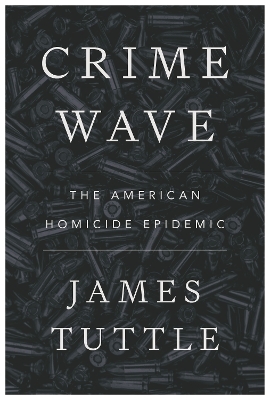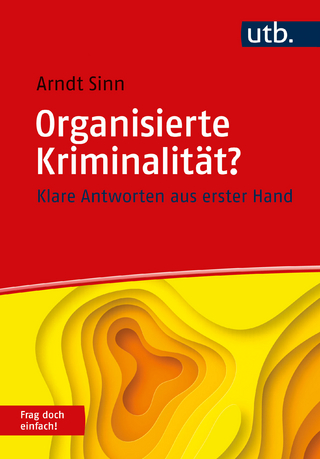
Crime Wave
The American Homicide Epidemic
Seiten
2025
New York University Press (Verlag)
978-1-4798-3111-1 (ISBN)
New York University Press (Verlag)
978-1-4798-3111-1 (ISBN)
- Noch nicht erschienen (ca. April 2025)
- Versandkostenfrei innerhalb Deutschlands
- Auch auf Rechnung
- Verfügbarkeit in der Filiale vor Ort prüfen
- Artikel merken
Examines the recent and unprecedented increase in the homicide rate
The homicide rate in the United States increased by approximately 55 percent from 2014 to 2021. An initial spike in homicide rates began in 2015, and the rate continued on its generally upward trajectory through subsequent years, eventually increasing by the largest annual margin in recorded history during 2020. By 2021, several cities and states recorded homicide rates higher than during the crime-plagued 1990s. Why did America suddenly become more violent?
James Tuttle examines the underlying causes behind this surge in violence, arguing that it is the result of the decline in American well-being, a growing distrust in institutions, an increase in alcohol and drug abuse, and escalating firearm sales. Tuttle also shows how the homicide epidemic has hit different parts of the country; notably there has been an increase in homicide in the Midwest that is 25 percent greater than in the rest of the country.
Through comprehensive analysis of the most recent crime data available, Tuttle provides compelling evidence supporting these contentions, illuminating the intricate relationship between societal decline and the homicide epidemic. This book buildings on evidence that demonstrates the limited impact of police tactics on crime rates, and finds little substantiation for the notion that police department defunding played a role in the rise of crime across American cities. Crime Wave attempts to reframe the public debate beyond the current “police-only” paradigm of explaining crime trends by examining the broader social and cultural forces that shape American violence.
The homicide rate in the United States increased by approximately 55 percent from 2014 to 2021. An initial spike in homicide rates began in 2015, and the rate continued on its generally upward trajectory through subsequent years, eventually increasing by the largest annual margin in recorded history during 2020. By 2021, several cities and states recorded homicide rates higher than during the crime-plagued 1990s. Why did America suddenly become more violent?
James Tuttle examines the underlying causes behind this surge in violence, arguing that it is the result of the decline in American well-being, a growing distrust in institutions, an increase in alcohol and drug abuse, and escalating firearm sales. Tuttle also shows how the homicide epidemic has hit different parts of the country; notably there has been an increase in homicide in the Midwest that is 25 percent greater than in the rest of the country.
Through comprehensive analysis of the most recent crime data available, Tuttle provides compelling evidence supporting these contentions, illuminating the intricate relationship between societal decline and the homicide epidemic. This book buildings on evidence that demonstrates the limited impact of police tactics on crime rates, and finds little substantiation for the notion that police department defunding played a role in the rise of crime across American cities. Crime Wave attempts to reframe the public debate beyond the current “police-only” paradigm of explaining crime trends by examining the broader social and cultural forces that shape American violence.
James Tuttle is Assistant Professor of Sociology and Criminology at the University of Montana. His work has appeared in Justice Quarterly, British Journal of Criminology, Homicide Studies, and the Journal of School Violence.
| Erscheint lt. Verlag | 29.4.2025 |
|---|---|
| Zusatzinfo | 28 b/w images |
| Verlagsort | New York |
| Sprache | englisch |
| Maße | 152 x 229 mm |
| Themenwelt | Recht / Steuern ► EU / Internationales Recht |
| Recht / Steuern ► Strafrecht ► Kriminologie | |
| Sozialwissenschaften ► Soziologie | |
| ISBN-10 | 1-4798-3111-5 / 1479831115 |
| ISBN-13 | 978-1-4798-3111-1 / 9781479831111 |
| Zustand | Neuware |
| Haben Sie eine Frage zum Produkt? |
Mehr entdecken
aus dem Bereich
aus dem Bereich
klare Antworten aus erster Hand
Buch | Softcover (2023)
UTB (Verlag)
19,90 €


